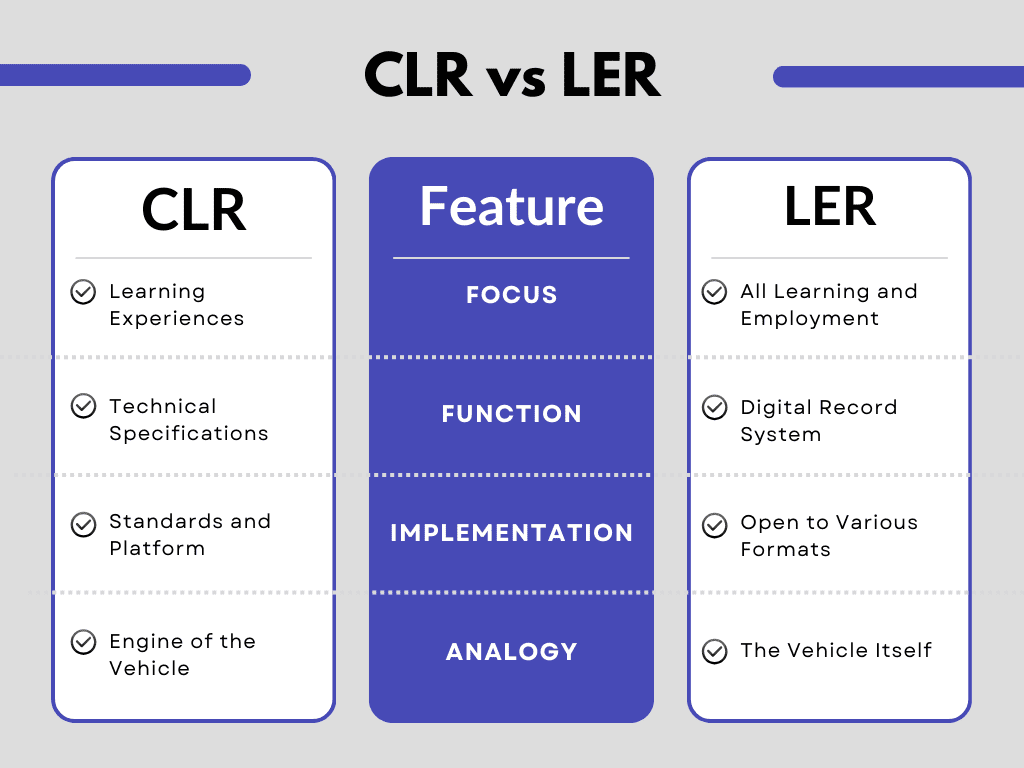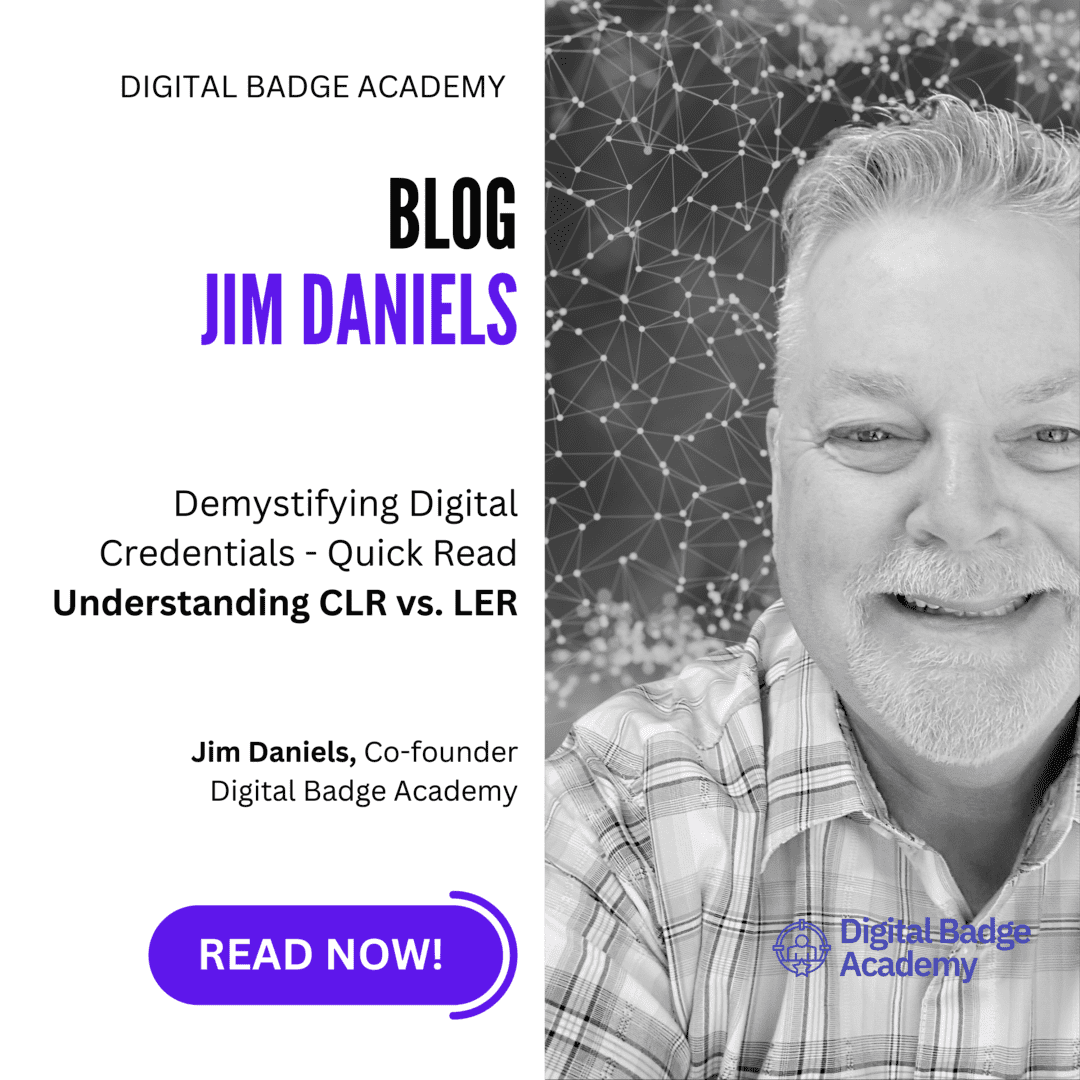With the evolving landscape of education and employment, traditional transcripts and resumes just don’t cut it anymore. This is why we have seen prolific growth in digital credentialing, where individuals can showcase their entire learning journey and skillset in a verifiable and portable format. We know this most commonly as digital badges. But amidst all the buzzwords, there are two newer terms often cause confusion: Comprehensive Learner Record (CLR) and Learning and Employment Record (LER). While related, they serve distinct purposes and are essential for advancing standards and capabilities for digital credentialing. Let’s conduct a simple break-down of the differences so you can be empowered to better understand to how navigate the digital credentialing eco-system!
The Engine vs. The Vehicle:
Imagine the CLR as the engine of your digital credential system. It’s the technical specification, like a blueprint, defining how learning and employment experiences are captured and shared securely. Courses, competencies, skills, workplace learning, and academic credentials – all find their place under the CLR’s hood.
The LER, on the other hand, is the broader vehicle carrying your entire story. LER is a broad term to describe a collection of credentials and other artifacts that may be related to education or employment. It encompasses academic achievements, resume or work history, workplace experiences, skills gained, certifications earned, and of course, digital badges that have been earned.
Key Differences at a Glance:

Choosing the Right Tool:
Now that you understand the distinctions, which one should you care about? It depends!
- CLR: If you’re an educational institution or platform provider looking to provide secure and verifiable learner records, adopting the CLR standard ensures a robust and reliable foundation to make this happen effectively.
- LER: If you’re an individual seeking a way to build a comprehensive record of both your learning and work experiences, look for platforms that integrate the CLR standard (for learning experiences) and cater to capturing your broader skillset by combining learning records with employment records and other essential experiences related to your professional development.
The Future of Digital Credentials:
Needless to say, the evolution of digital credentials is exciting to watch. CLR and LER are essential for allowing individuals to take more effective ownership of their learning and professional development journeys and present them seamlessly to potential employers, educators, or anyone interested in their unique skillsets and experiences. Remember, this is just the beginning of a more transparent and dynamic way for individuals to express their abilities in the digital world. It’s a growing and evolving trend that you should expect to hear more about as these standards and methodologies continue to mature!
Want to learn more?
Visit these resources to further develop your understanding around the application of CLR and LER.
- 1EdTech CLR Standard: https://www.1edtech.org/initiatives/digital-credentials/clr
- Education Design Lab: https://eddesignlab.org/lers/
- Credential Engine: https://credentialengine.org/credential-transparency/learning-and-employment-records-lers/
- AACRAO Digital Credentials: https://www.aacrao.org/
About the author:
Jim Daniels has more than 25 years of combined experience in education and credential program development. He is broadly recognized for his significant work and contribution in developing, operationalizing, and managing IBM’s award-winning digital credentialing program, which has issued over 6 million digital credentials worldwide. Since March of 2022, Jim has worked in a consulting and advisory capacity to bring the voice of experience to numerous other global enterprise organizations in their quest to develop high-impact digital credentialing programs. Jim can be contacted directly at jim@digitalbadgeacademy.net, or through LinkedIn – www.linkedin.com/in/danielsje




